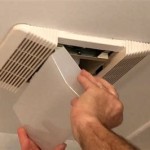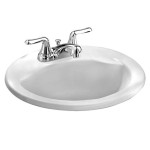How To Get Bad Smells Out Of The Bathroom
Bathrooms, by their very nature, are prone to developing unpleasant odors. The enclosed space combined with moisture, organic waste, and infrequently cleaned surfaces creates an ideal environment for bacteria and mold to thrive. This article provides a comprehensive guide to identifying the sources of bathroom odors and implementing effective strategies to eliminate them.
Identifying the Source of the Odor
Before attempting to eliminate a bathroom odor, it is crucial to pinpoint its origin. Masking the smell with air fresheners is a temporary solution that does not address the underlying problem. A thorough investigation is necessary to determine the root cause.
One of the most common culprits is the toilet. While regular flushing removes solid and liquid waste, residue can accumulate on the bowl's surface, under the rim, and in the trap. Mineral deposits from hard water can exacerbate this problem, creating a breeding ground for odor-causing bacteria. The toilet's wax ring, which seals the base to the drainpipe, can also deteriorate over time, allowing sewer gases to escape. In rare cases, a blockage in the drainpipe can cause sewage to back up, releasing unpleasant odors into the bathroom.
The sink and shower drains are another potential source of bathroom odors. Hair, soap scum, and other debris can accumulate in the drainpipe, creating a slimy buildup that decomposes and releases foul smells. This buildup can also harbor bacteria and mold, further contributing to the odor. The overflow drain in the sink can also trap stagnant water and debris, becoming a source of unpleasant smells.
The shower curtain or door can also contribute to bathroom odors. Mold and mildew thrive in the humid environment of the shower, and they can grow on the curtain or door, releasing a musty smell. Soap scum and hard water deposits can also accumulate on these surfaces, providing a food source for mold and mildew.
Bathroom tiles and grout are porous surfaces that can absorb moisture and organic matter. Over time, this can lead to the growth of mold and mildew, particularly in areas with poor ventilation. Stains from spills and splashes can also contribute to odors, especially if they are not cleaned up promptly.
The bathroom floor, especially if carpeted, can absorb spills, moisture, and odors. Urine stains, spilled cleaning products, and general foot traffic can all contribute to unpleasant smells. Carpets provide a particularly favorable environment for bacteria and mold to grow.
Even seemingly innocuous items, such as trash cans, dirty towels, and damp bath mats, can contribute to bathroom odors. Trash cans can harbor decaying organic matter, while towels and bath mats can trap moisture and promote the growth of mold and mildew. Empty product containers left in the bathroom can also retain residual odors that contribute to the overall smell.
Finally, the bathroom's ventilation system can play a significant role in odor control. A poorly functioning or non-existent exhaust fan can trap moisture and odors in the bathroom, creating a breeding ground for bacteria and mold. Clogged vents can also reduce airflow, exacerbating the problem.
Effective Cleaning Strategies
Once the source of the odor has been identified, it is important to implement effective cleaning strategies to eliminate it. This may involve a combination of cleaning solutions, tools, and techniques.
For toilet odors, start by cleaning the toilet bowl thoroughly with a toilet bowl cleaner. Pay particular attention to the area under the rim, where bacteria and mineral deposits tend to accumulate. Use a toilet brush to scrub the entire bowl, including the trap. For stubborn stains, consider using a pumice stone or a cleaning solution specifically designed to remove mineral deposits. To clean the exterior of the toilet, use a multi-purpose cleaner and a microfiber cloth. Be sure to clean the base of the toilet, where spills and stains can accumulate. If the wax ring is suspected of being damaged, it may need to be replaced by a professional plumber. This involves removing the toilet, replacing the wax ring, and reinstalling the toilet.
To clean sink and shower drains, start by removing any visible debris from the drain opening. This can be done with a pair of tweezers or a bent wire hanger. Next, pour a cup of baking soda down the drain, followed by a cup of vinegar. Let the mixture fizz for about 30 minutes, then flush with hot water. This will help to loosen and dissolve any buildup in the drainpipe. For more stubborn clogs, consider using a drain snake or a chemical drain cleaner. Follow the manufacturer's instructions carefully when using chemical drain cleaners, as they can be corrosive and harmful. Regularly flushing the drain with hot water after each use can help to prevent future buildup. For the overflow drain, use a small brush or pipe cleaner to remove any debris. Flush the drain with hot water to rinse away any remaining residue.
To clean the shower curtain or door, start by removing any visible mold or mildew with a bleach-based cleaner. Spray the cleaner onto the affected areas and let it sit for a few minutes before scrubbing with a brush or sponge. Rinse thoroughly with water. To prevent future mold and mildew growth, consider using a shower curtain liner that can be easily replaced. Also, wipe down the shower door or curtain after each use to remove excess moisture. Regularly washing the shower curtain or liner in the washing machine can also help to keep it clean and fresh.
To clean bathroom tiles and grout, start by scrubbing the tiles and grout with a brush and a multi-purpose cleaner. For stubborn stains, consider using a grout cleaner or a mixture of baking soda and water. Apply the cleaner to the affected areas and let it sit for a few minutes before scrubbing. Rinse thoroughly with water. To prevent future mold and mildew growth, consider sealing the grout with a grout sealant. Regularly cleaning the tiles and grout with a disinfecting cleaner can also help to keep them clean and fresh.
To clean the bathroom floor, start by sweeping or vacuuming to remove any loose debris. Then, mop the floor with a multi-purpose cleaner. For carpeted floors, consider using a carpet cleaner or a steam cleaner to remove any stains and odors. Be sure to dry the carpet thoroughly after cleaning to prevent mold and mildew growth. Regularly vacuuming or sweeping the floor and cleaning up spills promptly can help to prevent odors from developing.
To address odors from trash cans, dirty towels, and damp bath mats, start by emptying the trash can regularly and washing it with soap and water. Consider using a trash can liner to prevent spills and stains. Wash towels and bath mats regularly in hot water with detergent and bleach. Be sure to dry them thoroughly before storing them. Hang up towels and bath mats after each use to allow them to air dry. Replace old or worn-out towels and bath mats regularly.
To improve the bathroom's ventilation, ensure that the exhaust fan is functioning properly. Clean the fan blades and vents regularly to remove any dust or debris. If the bathroom does not have an exhaust fan, consider installing one. Open a window after showering or bathing to allow moisture to escape. Consider using a dehumidifier in the bathroom to reduce humidity levels.
Preventative Measures
Preventing bathroom odors is just as important as eliminating them. By implementing a few simple preventative measures, it is possible to maintain a fresh-smelling bathroom and reduce the need for extensive cleaning.
One of the most important preventative measures is to maintain good hygiene habits. This includes flushing the toilet after each use, wiping up spills promptly, and washing towels and bath mats regularly. Encourage all members of the household to practice these habits.
Proper ventilation is crucial for preventing bathroom odors. Ensure that the exhaust fan is used whenever showering or bathing. Open a window after each use to allow moisture to escape. Keep the bathroom door open when not in use to improve airflow.
Regular cleaning is essential for preventing the buildup of odor-causing bacteria and mold. Clean the toilet, sink, shower, and floor at least once a week. Pay particular attention to areas that are prone to moisture and buildup, such as the toilet bowl rim, shower drain, and tile grout. Use disinfecting cleaners to kill bacteria and mold.
Consider using odor-absorbing products, such as baking soda, activated charcoal, or essential oil diffusers. Place a box of baking soda in the bathroom to absorb odors. Activated charcoal can be placed in a small container or bag and hung in the bathroom. Essential oil diffusers can be used to release pleasant scents into the air. Choose essential oils with antibacterial and antifungal properties, such as tea tree, eucalyptus, or lavender.
Avoid using harsh chemicals, such as bleach, on a regular basis. While bleach can be effective for killing mold and bacteria, it can also damage surfaces and release harmful fumes. Instead, opt for natural cleaning solutions, such as vinegar, baking soda, or lemon juice. These solutions are effective at cleaning and deodorizing without posing a risk to health or the environment.
Inspect the bathroom regularly for leaks and water damage. Leaks can create a damp environment that is conducive to mold and mildew growth. Repair any leaks promptly to prevent further damage. Check for water stains on the walls, ceiling, and floor, as these can indicate a leak. If you suspect a leak, contact a professional plumber to investigate.
Proper storage of bathroom products is important for preventing odors. Store toiletries, cleaning supplies, and other items in closed containers to prevent them from releasing odors into the air. Keep dirty laundry in a hamper with a lid to contain odors. Avoid storing damp or wet towels in a pile, as this can promote mold and mildew growth.
Finally, consider the materials used in the bathroom. Non-porous materials, such as ceramic tile and glass, are less likely to absorb odors than porous materials, such as carpet and wood. If renovating the bathroom, consider using non-porous materials to reduce the risk of odors.

7 Indispensable Bathroom Smell Remover S In Housekeeping

How To Get Rid Of Sewage Smell In Your Bathroom Bond Cleaning Adelaide
What To Do When You Notice A Sewer Smell In Bathroom Spaces Howstuffworks

How To Make Your Toilet Smell Nice 10 Easy S

How To Get Rid Of Bathroom Odors Bob Vila

How To Make Your Bathroom Smell Good 10 Genius S Get The Stink Out Bright Side

How To Make Your Bathroom Smell Good 10 Genius S Get The Stink Out Bright Side

7 Indispensable Bathroom Smell Remover S In Housekeeping

Why Does My Toilet Stink Out Of This World

Toilet Smell Likes Rotten Eggs Rainaldi Home Services
Related Posts







